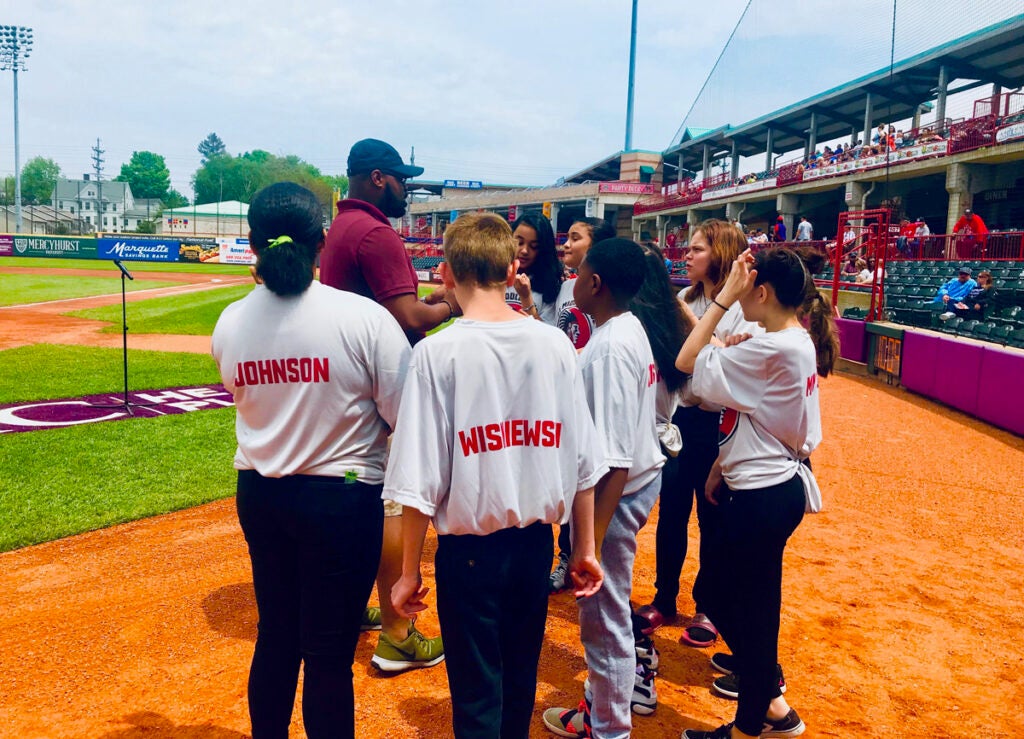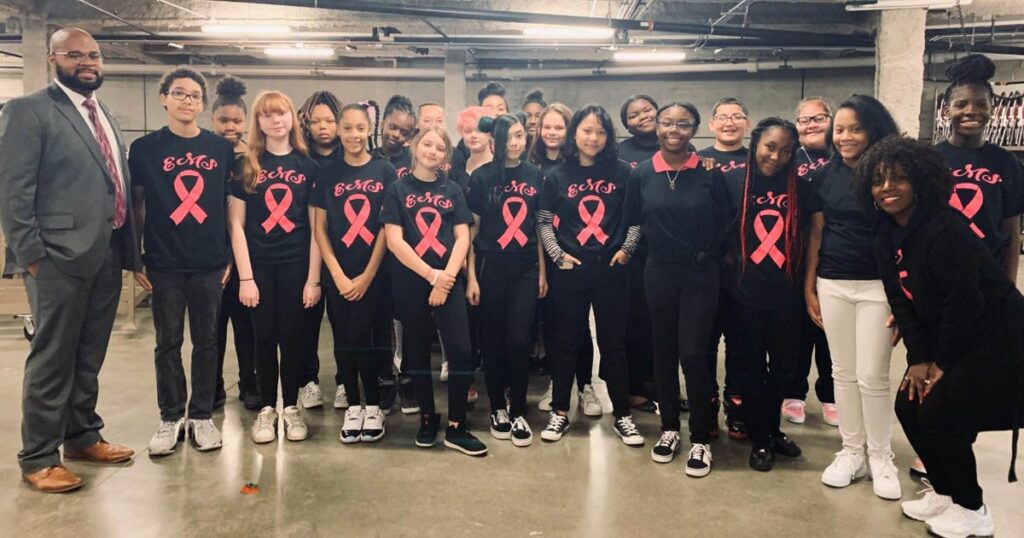“One possibility is that there may be role-model benefits, so having a Black teacher in front of the class, being a subject-matter expert, might act as role model and increase children’s long-term aspirations for themselves,” she said.
According to Hart, there’s also good evidence in the social science literature that students are responsive to the expectations that we hold for them. Research shows that Black teachers tend to hold slightly higher expectations for their Black students. And Black educators are more likely to use references or examples that tap into the lived experience of their Black students.
Constance Lindsay, an assistant professor at the University of North Carolina at Chapel Hill’s School of Education, was also a contributing researcher to the paper on the role-model effect. Lindsay has spent a great deal of her career thinking about racial achievement gaps and the particular policies and practices that might help close them. She said one of the policy motivations for focusing on Black students in the study is that they have higher dropout rates and lower college attendance rates than their white counterparts. Lindsay says low-income Black boys saw the biggest boosts in educational outcomes from being paired to a Black teacher.
“We see huge jumps for them, and there’s lots of societal gain to be had from that,” Lindsay said. “There’s been extensive work on the cost-benefit of intervening with children earlier rather than later in life. So it makes sense to do some of these relatively low-cost investments of increasing [Black boys’] exposure to Black teachers.”
Lindsay and her team also looked at whether there were benefits for white students who were matched with Black teachers. They found that Black teachers had little to no effect on white student education outcomes, which she said further proves the impact of the role-model effect for Black students.
“Most white children are already race-matched to their teacher,” Lindsay said. “And so what this suggests is that having a greater representation of Black teachers in the workforce benefited Black children without any negative effects for the white children we were looking at as well.”
‘They see me as an advocate for them to succeed’
Aaron Taylor is Black and a music teacher at a middle school in Erie, Pennsylvania. Neither of his parents graduated from college, and he didn’t always think that college was an option for him. But growing up, music was his source of solace.
“I’ve always had a lot of energy, and music was a way not only to calm the energy I had but to put it somewhere,” said Taylor, 26.

From fifth grade onward, Taylor attended performing arts schools in Pittsburgh. And during those years, he developed a close relationship with his African American trombone instructor, Carl Jackson, who gave him a key piece of career advice toward the end of high school.
“It wasn’t until my 11th grade year where I sat down and I talked to Mr. Jackson and I told him I want to go to school to be a music performer … and he said have you ever thought about being a teacher?”
Inspired by Mr. Jackson, Taylor went to college to become a music teacher. At the middle school where he teaches now, only 11% of the teachers are Black, though almost half of the student population is. Taylor said his students of color depend on him in a different way, and he doesn’t want to let them down.
“They see me as a role model, they see me as an advocate for them to succeed, they see me as someone who’s made a way when there wasn’t a way,” Taylor said.
In his classroom, he likes to create a sense of community, where all cultural perspectives are celebrated. Taylor begins each class with what he calls a bell ringer, a song that’s popular on the radio at any given time. Sometimes, it’s hip-hop, sometimes it’s pop. But the ultimate goal is to bring student interests into the classroom. At his school, 17 different languages are represented, and 25 different countries.
“I do have units where I talk about music from different parts of the world, so for the students who are coming from these parts of the world, they can also provide a bit of their own authentic experience,” Taylor said.
His students’ experiences become a tool for teaching and learning. Lindsay, of UNC, said that’s effective.
“Instead of viewing what students bring to school from a deficit orientation, you’re really viewing it from an asset-based orientation and trying to build on their culture instead of viewing it as outside of the mainstream,” Lindsay said.

Taylor remembers finishing his master’s degree in 2018, and his school shared the news on its social account. Many of his students saw the announcement and flooded him with questions.
“They were like, ‘Mr. Taylor, I heard you graduated, you finished something, what was it?’ And that allowed me to open up that conversation,” he said.
For Taylor, every opportunity he gets to stand in front of his students and teach is one more chance they get to see what’s possible for themselves.
“When you go to a classroom where you feel you are wanted, desired, and respected, you feel a part of it, you feel a part of the community.”
Support for WHYY’s coverage on health equity issues comes from the Commonwealth Fund.



